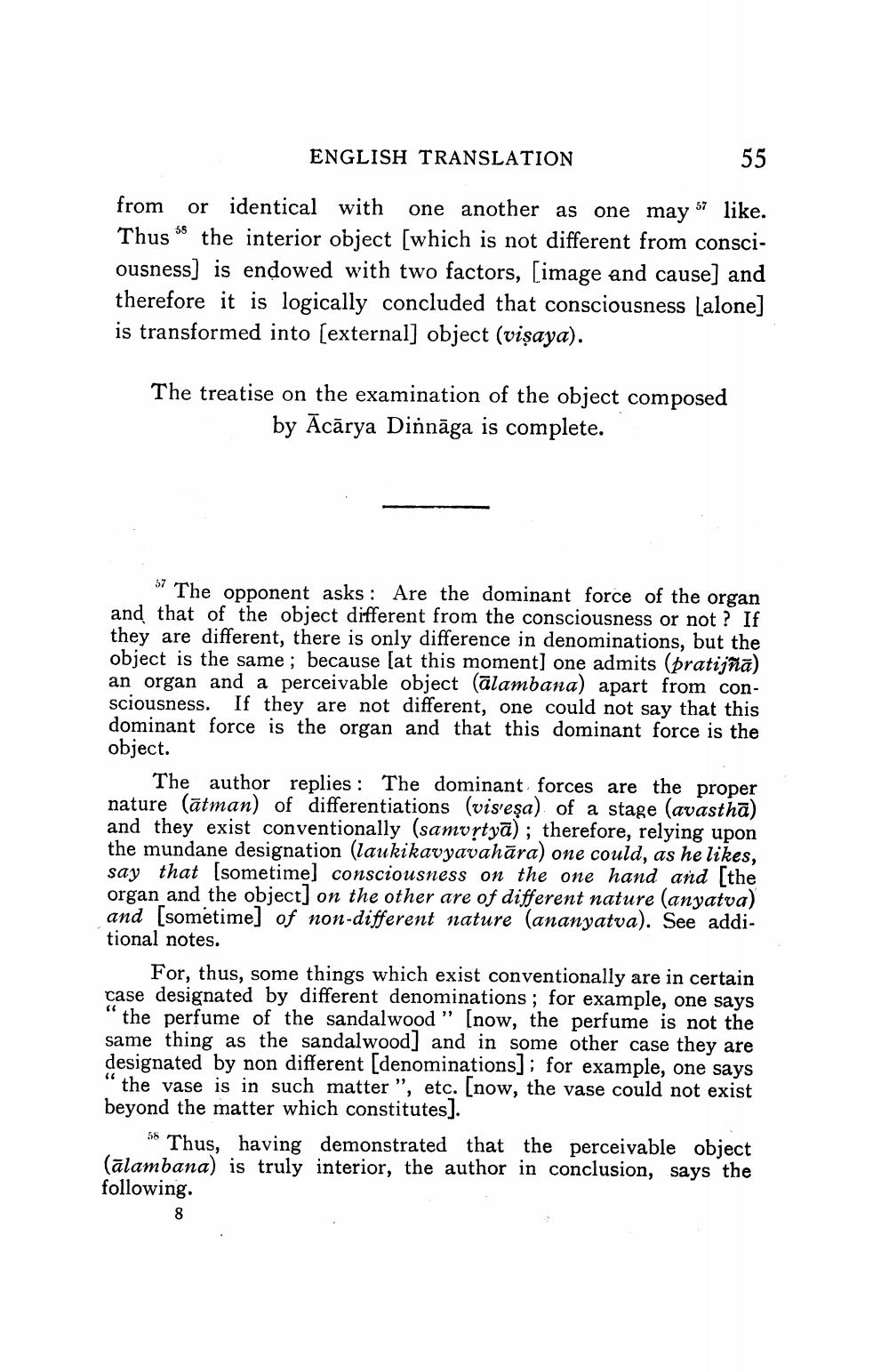________________
ENGLISH TRANSLATION
55
from or identical with one another as one may 57 like. Thus “ the interior object (which is not different from consciousness) is endowed with two factors, [image and cause] and therefore it is logically concluded that consciousness Lalone] is transformed into (external] object (vişaya).
The treatise on the examination of the object composed
by Ācārya Dinnāga is complete.
• The opponent asks : Are the dominant force of the organ and that of the object different from the consciousness or not? If they are different, there is only difference in denominations, but the object is the same; because (at this moment] one admits (pratijña) an organ and a perceivable object (alambana) apart from consciousness. If they are not different, one could not say that this dominant force is the organ and that this dominant force is the object.
The author replies: The dominant forces are the proper nature (ātman) of differentiations (vis'eşa) of a stage (avasthā) and they exist conventionally (samvrtyā); therefore, relying upon the mundane designation (laukikavyavahāra) one could, as he likes, say that (sometime] consciousness on the one hand and (the organ and the object] on the other are of different nature (anyatva) and [sometime] of non-different nature (ananyatva). See additional notes.
For, thus, some things which exist conventionally are in certain case designated by different denominations, for example, one says “the perfume of the sandalwood " (now, the perfume is not the same thing as the sandalwood) and in some other case they are designated by non different (denominations]; for example, one says "the vase is in such matter", etc. [now, the vase could not exist beyond the matter which constitutes].
56 Thus, having demonstrated that the perceivable object (ālambana) is truly interior, the author in conclusion, says the following




